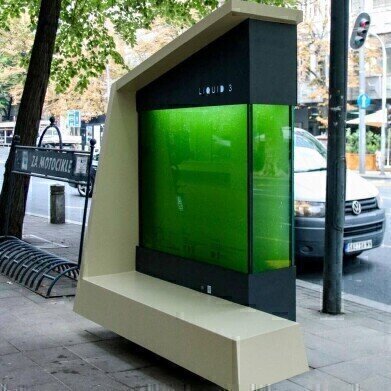Air Monitoring
Could Liquid Trees Be a Game-Changer for Urban Air Pollution?
Apr 01 2023
Air pollution is a growing concern in urban areas worldwide, with dire consequences for human health and the environment. Belgrade, Serbia, is no exception, being the fourth most polluted city in the country. In an effort to combat this problem, scientists have developed an innovative solution: the "liquid tree," an urban photo-bioreactor that harnesses the power of microalgae to improve air quality.
The Liquid Tree: A Solution for Tackling Greenhouse Gas Emissions
The liquid tree is Serbia's first urban photo-bioreactor, designed to address the issue of greenhouse gas emissions and improve air quality in densely populated areas. The device contains 600 liters of water and microalgae that bind carbon dioxide (CO2) and produce pure oxygen through the process of photosynthesis.
Dr. Ivan Spasojevic, one of the project's authors from the Institute for Multidisciplinary Research at the University of Belgrade, explains that microalgae are 10 to 50 times more efficient than trees in binding CO2. This is equivalent to the CO2-binding capacity of two 10-year-old trees or 200 square meters of lawn. The goal of the liquid tree, however, is not to replace forests but to fill urban pockets where there is no space for planting trees.
Belgrade's Pollution Problem
Belgrade's air quality is severely compromised due to the presence of two large coal power plants nearby, which are among the top 10 dirtiest plants in Europe, according to the European NGO Health and Environment Alliance (HEAL), filling the air with high concentrations of particulate matter. A report in December 2019 also highlighted that Serbia had Europe's worst per capita record for pollution-related deaths, with 175 per 100,000 people.
Activists claim that pollution in Serbia and other parts of the Balkan peninsula is so severe that it can be seen, smelled, and even tasted, particularly during the autumn and winter seasons.
The Potential Impact of Liquid Trees on Urban Air Pollution
The liquid tree offers a novel and efficient solution for sequestering greenhouse gases in Belgrade's most polluted urban areas. The latest Intergovernmental Panel on Climate Change (IPCC) report states that atmospheric greenhouse gas levels must decline by 43% before 2030 and 60% by 2035 to maintain global temperature rise below 1.5°C.
To achieve these targets, transitioning away from fossil fuels and employing carbon removal through natural sequestration and innovative technologies like the liquid tree are essential. The effectiveness of microalgae in locking away CO2 is estimated to be 10 to 50 times higher than regular trees, making it a promising solution for urban areas with limited space for planting trees.
The liquid tree represents a potential game-changer in the fight against urban air pollution. By utilizing microalgae to bind carbon dioxide and produce pure oxygen, this technology offers a practical and efficient solution for improving air quality in densely populated cities like Belgrade. While not intended to replace natural forests, liquid trees can fill the void in urban pockets where planting trees is not feasible. As the world seeks innovative solutions to combat climate change and improve air quality, the liquid tree offers a glimpse of a cleaner, greener future for our urban environments.
Digital Edition
AET 28.2 April/May 2024
May 2024
Business News - Teledyne Marine expands with the acquisition of Valeport - Signal partners with gas analysis experts in Korea Air Monitoring - Continuous Fine Particulate Emission Monitor...
View all digital editions
Events
Jul 30 2024 Jakarta, Indonesia
China Energy Summit & Exhibition
Jul 31 2024 Beijing, China
2024 Beijing International Coal & Mining Exhibition
Aug 07 2024 Beijing, China
IWA World Water Congress & Exhibition
Aug 11 2024 Toronto, Canada
Aug 25 2024 Stockholm, Sweden and online









.jpg)








